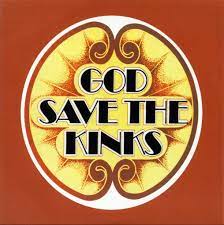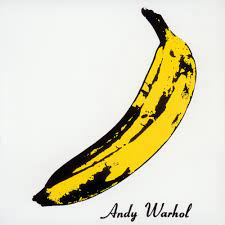When in 1996, as he exited his beloved Kinks after more than thirty year to enter a new career as a solo artist, the risks were great. When his U.S. tour came to Chicago, my brother-in-law and I attended his performance at the Apollo Theatre on the North Side in 1998.
The Apollo was nothing like its namesake in Harlem. There was seating for an audience of about 200 people, with folding chairs set up in the front row. From beginning to end, Ray and his extra guitar player managed to put on a show that was one of the best I've ever seen, including Kinks shows promoting their latest album, from Everybody's in Showbiz in 1972 to Phobia in 1993.
Ray's show, 20th Century Man, coincided with the publication of his first memoir, X-ray, so it came as no surprise to hear tales from his childhood, a narrative punctuated by songs both old and new.
Before going on about 20th Century Man, it's useful to jump ahead a couple of years to Ray's first album, apart from soundtrack music for the film Escape to Waterloo decades earlier:
- The Storyteller (EMI/ Konk, 1998)
- Other People's Lives (V2, 2006)
This is finely crafted verse set to music that isn't memorable and really doesn't rock.
- Working Man's Cafe (V2, 2007)
Same as the previous year's stuff. I want to like it, but aside from the title tune, I couldn't name any of the others. Nothing seems to stand out.
- The Kinks Choral Collection (Universal/ Decca, 2009)
Here Ray returns to the tried and true and scores through the beautiful choir behind his lead vocal.
NPR download, 2009 New York City
- See My Friends (Decca, 2010)
Going back to his Kinks material seems to be a habit, this time with various artists in duets. I wonder if Ray's guests were in the same room with him when they laid down their vocals. It's time for something truly new.
- Americana (Legacy, 2017) and Our Country: Americana, Act II (2018)
This is the album I'd been waiting for. Ray's backing band, the Jayhawks, rocks with a slant all its own. In fact, it is the musical equivalent of Ray's second memoir, which bears the same title. This album, in fact, picks up where Storyteller left off, the Kinks' arrival in America in 1964. The next chapter in Ray's story involves the USA exclusively and examines his experience here with an outpouring of music that is Ray's best since the Kinks called it quits in 1996.
It really does require a second act to complete the story of Ray's travails in America.
IN ROTATION:
The Red Norvo Trio with Tal Farlow and Charles Mingus: The Savoy 6 Sessions (Savoy, 1950, '51)
lightly & politely....
- Phineas Newborn, Solo Piano (Atlantic/ 32 Jazz, 1975)
- Brian Wilson, In the Key of Disney (Disney, 2011)
- Lee Wiley, Nights in Manhattan/ Sings Vincent Youmans/ Sings Irving Berlin (Columbia, 1950-'51)
- Various Artists, Time and Love: The Music of Laura Nyro (Astor Place, 1997)
- Ethnic Heritage Ensemble, Dance With the Ancestors (Chameleon, 1993)
- Red Rodney, Quintets, 1950-1955: Borrowed Times (Fresh Sound reissues, 2009)
NEXT: The 1960s revolution



















